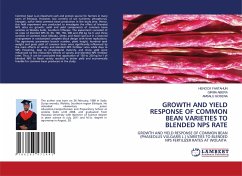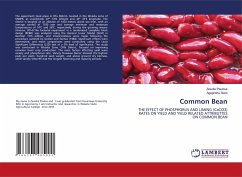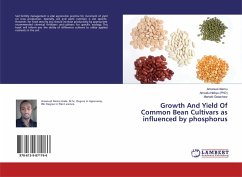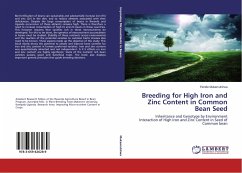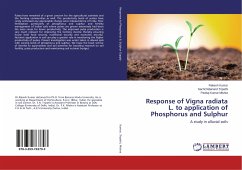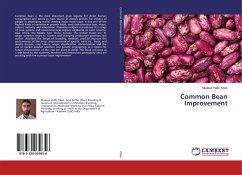
RESPONSE OF COMMON BEAN VARIETIES TO PHOSPHORUS APPLICATION
GROWTH AND YIELD RESPONSE OF COMMON BEAN (PHASEOLUS VULGARIS L.) VARIETIES TO PHOSPHORUS APPLICATION
Versandkostenfrei!
Versandfertig in 6-10 Tagen
27,99 €
inkl. MwSt.

PAYBACK Punkte
14 °P sammeln!
Common bean (Phaseolus vulgaris L.) is an important cash crop and protein source for farmers in many parts of Ethiopia. Phosphorus (P) is an important plant macronutrient, making up about 0.2% of a plant's dry weight. However, beans production is constrained by limited soil p supply and low yielding varieties. The aim of the experiment was to evaluate the response of common bean varieties to different rates of P application. Thus, three phosphorus rates (0, 60 and 120) kg P205 ha-1 as main plot and ten varieties of common bean as subplot using split plot design with three replications and test...
Common bean (Phaseolus vulgaris L.) is an important cash crop and protein source for farmers in many parts of Ethiopia. Phosphorus (P) is an important plant macronutrient, making up about 0.2% of a plant's dry weight. However, beans production is constrained by limited soil p supply and low yielding varieties. The aim of the experiment was to evaluate the response of common bean varieties to different rates of P application. Thus, three phosphorus rates (0, 60 and 120) kg P205 ha-1 as main plot and ten varieties of common bean as subplot using split plot design with three replications and tested at Wolaita Sodo during main growing seasons in 2015. The result showed that day to flowering, days to maturity, plant height, branch per plant, pod/plant, seed/pod and 100 seed weight of common bean significantly influenced by phosphorous and varieties. The present experiment would suggest the absence of P and varieties 'Tatu' showed statically comparable performance, hower in order to reach sound conclusion economic analysis would be done to maximize common bean yield economically appropriate return in the future.



